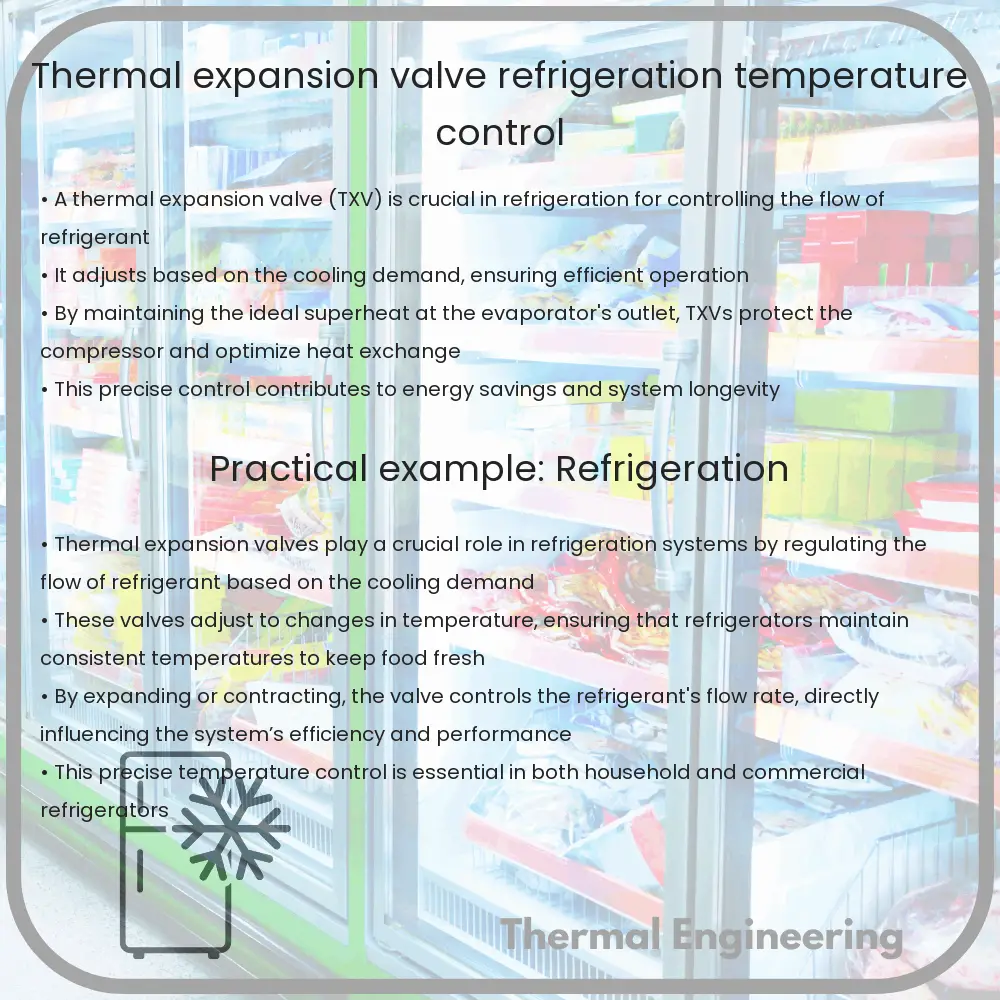Learn about the thermal expansion valve (TXV), a key component in regulating refrigerant flow in cooling systems to enhance HVAC efficiency.

Understanding the Thermal Expansion Valve in Refrigeration Temperature Control
The thermal expansion valve (TXV or TEV) plays a crucial role in refrigeration and air conditioning systems by precisely controlling the amount of refrigerant released into the evaporator. This element of temperature control is key to enhancing efficiency and response in various cooling contexts.
What is a Thermal Expansion Valve?
A thermal expansion valve is a type of valve that automatically adjusts the flow of refrigerant in a cooling system based on the cooling demand. The main goal of a TXV is to regulate the rate of refrigerant flow into the evaporator while maintaining the ideal superheat level at the outlet of the evaporator.
Components of the Thermal Expansion Valve
- Valve Body: The main structure which houses the internal components.
- Power Element: Filled with a temperature-sensitive substance that expands or contracts, thus manipulating the valve.
- Spring: Applies pressure against the power element, aiding in regulating the position of the valve based on the refrigerant pressure.
- Orifice/Diaphragm: Controls the exact amount of refrigerant that can pass through based on movements from the power element and spring.
How Does a Thermal Expansion Valve Work?
The TXV controls the flow of refrigerant by sensing the temperature and pressure conditions within the evaporator. Here’s a streamlined step-by-step of its operation:
- The valve receives feedback from a temperature sensing bulb placed at the evaporator outlet, which monitors the superheat, or the temperature of the vapor coming out of the evaporator.
- The sensing bulb is filled with a similar refrigerant which exerts pressure on the diaphragm of the TXV as the temperature increases.
- This pressure is balanced by a spring and opposing pressures within the valve which adjust depending on the system’s load requirements.
- Based on the superheat information, the TXV adjusts to allow more or less refrigerant into the evaporator, ensuring optimal efficiency and cooling performance.
Role in Refrigeration Temperature Control
Essentially, the thermal expansion valve’s capability to adjust the refrigerant flow helps maintain a constant superheat in the cooling system, which is critical for the efficient vaporization of the refrigerant without drawing excessive energy or causing wear. By achieving this balance, the TXV ensures the cooling system operates reliably and efficiently under varying load conditions.
Benefits of Using a Thermal Expansion Valve
- Efficiency: Maintains precise control of superheat and refrigerant flow, enhancing the overall energy efficiency of the HVAC system.
- Protection: Helps prevent the evaporator from flooding or starving, which can lead to damage and insufficient cooling.
- Adaptability: Automatically adjusts to varying thermal loads, making it ideal for environments with fluctuating temperature demands.
- Cost-effectiveness: Improves system longevity and reduces maintenance costs by optimizing operating conditions.
By understanding and implementing effective components like the thermal expansion valve, refrigeration systems can achieve remarkable precision in temperature control, ensuring both performance and durability. This makes TXV an indispensable part of modern refrigeration and air conditioning systems, showcasing the interplay of physics and engineering for practical thermal management solutions.